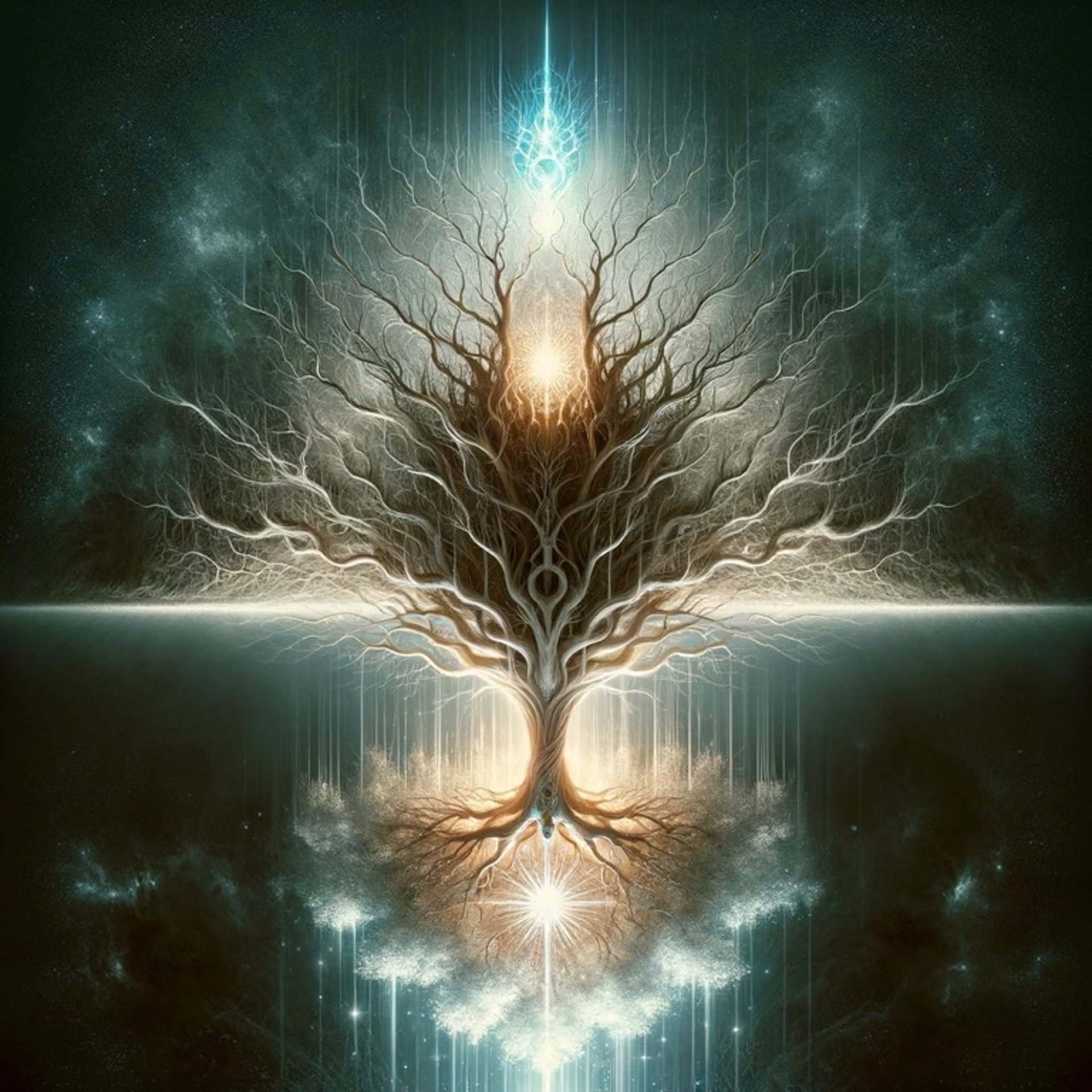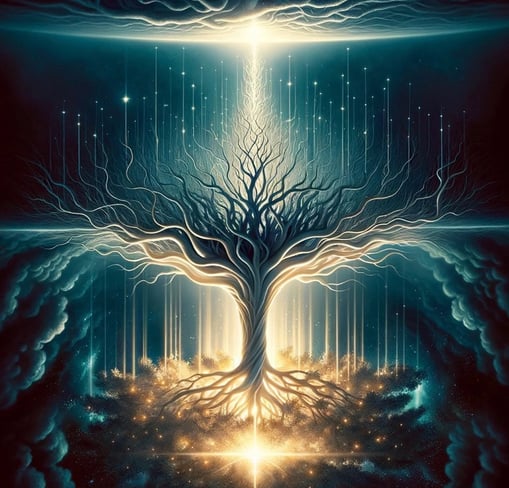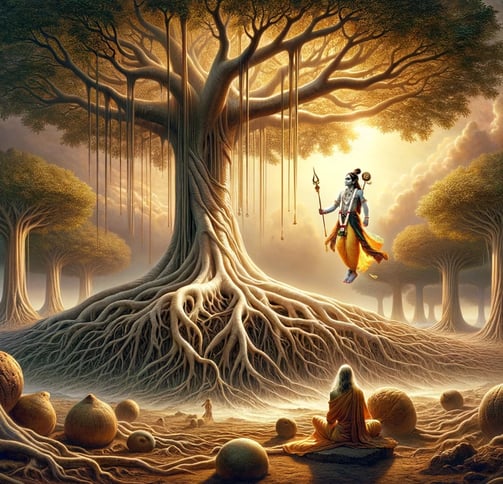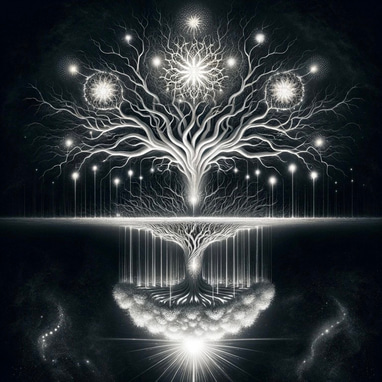
Unlocking the Eternal Wisdom: An Exploration of the 15th Chapter of the Bhagavad Gita
Delve into the profound teachings of the Bhagavad Gita’s 15th Chapter, ‘Purushottama Yoga,’ where the allegory of the inverted Ashwattha tree and the essence of the Supreme Divine offer a pathway to understanding the impermanent nature of the material world and the journey towards eternal liberation.
PHILOSOPHYEASTERN PHILOSOPHY
2/7/20242 min read
The 15th Chapter of the Bhagavad Gita, known as “Purushottama Yoga” or “The Yoga of the Supreme Divine Personality,” stands out for its profound philosophical depth and spiritual insight. This chapter delves into the metaphysical structure of the material world, the nature of individual souls, and the supreme character of the ultimate reality, offering a concise yet comprehensive overview of the Vedantic worldview.
Overview
Lord Krishna begins the chapter with the allegory of the inverted Ashwattha tree (the Banyan tree), representing the material world. This tree, with its roots upward and branches down, symbolizes the temporal and ever-changing nature of the physical universe, rooted in the eternal. The allegory encourages seekers to understand the impermanent nature of the material world and to sever this deeply ingrained tree of attachment with the weapon of detachment, thereby seeking the path toward the eternal truth.
Key Themes
The Temporal World: Krishna describes the material world as an impermanent and inverted reflection of the spiritual realm. The comparison to an Ashwattha tree underscores the complexity and entanglement of life, driven by the three Gunas (modes of material nature).
The Eternal Soul: The chapter emphasizes the immortal nature of the soul (Atman) that transcends the physical body. Unlike the body, which is subject to birth, death, and decay, the soul is eternal, unchanging, and indestructible.
Divine Essence: Krishna reveals his essence as the Supreme Divine (Purushottama), the ultimate reality that sustains both the perishable material world and the imperishable souls. He is the source of light in all luminous objects and the wisdom behind all spiritual understanding, underlining the panentheistic nature of the divine—immanent in the world yet transcending it.
The Path to Liberation: The chapter outlines the path to realizing the Supreme Divine, emphasizing the importance of unwavering devotion, knowledge, and detachment. Krishna assures that those who truly understand his transcendent nature will be liberated from the cycle of birth and death.
The Ultimate Goal: The ultimate goal of life, according to this chapter, is to attain Purushottama, the highest state of being that transcends both the material and the spiritual realms. This is achieved by recognizing and worshiping Krishna as the Supreme Divine Personality, leading to liberation (Moksha) and eternal bliss.
Philosophical and Spiritual Insights
The 15th Chapter of the Bhagavad Gita serves as a concise guide to Vedantic philosophy, offering insights into the nature of reality, the soul, and the divine. It emphasizes the importance of discernment in distinguishing the eternal from the transient and encourages seekers to cultivate detachment from the material world in pursuit of spiritual truth.
Review
This chapter is celebrated for its succinct yet profound exposition of complex spiritual concepts, making it a cornerstone of Hindu philosophical thought. Its teachings inspire seekers to look beyond the material veneer of existence and to seek the eternal truth embodied by Krishna. The allegory of the Ashwattha tree and the description of the Supreme Divine Personality offer compelling imagery that resonates with spiritual aspirants, encapsulating the essence of the spiritual journey towards liberation and union with the divine.
In essence, the 15th Chapter of the Bhagavad Gita encapsulates the heart of Vedantic wisdom, providing both a deep philosophical framework and practical guidance for those on the spiritual path. It is a chapter that calls for contemplation, devotion, and the pursuit of higher knowledge, leading ultimately to the realization of the self’s unity with the Supreme Divine.


My post content




